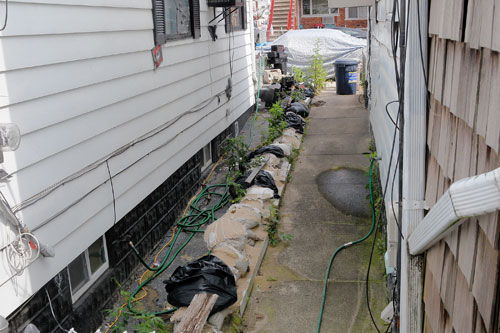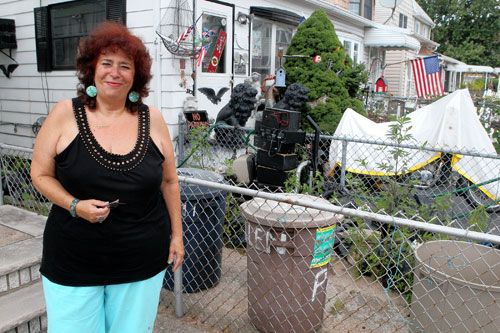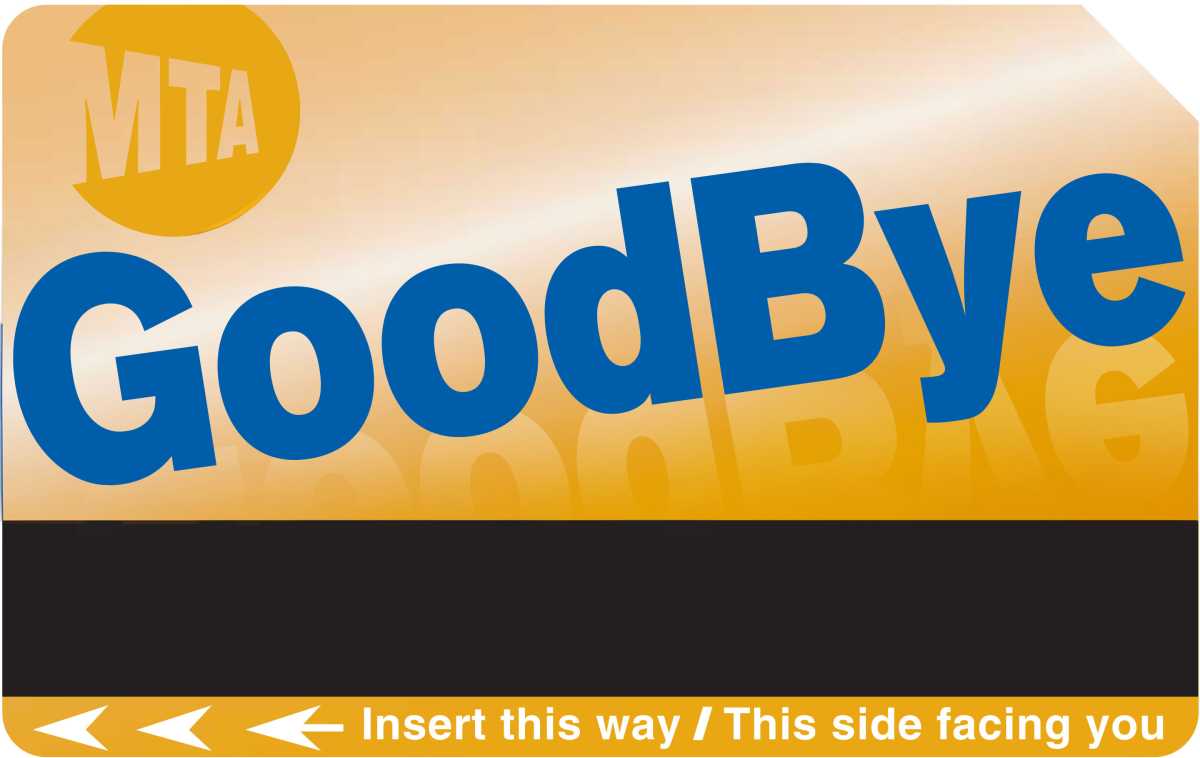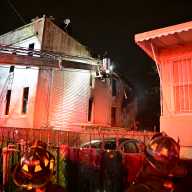Good fences may make good neighbors, but a shared driveway can sometimes have the opposite effect.
Two Gerritsen Beach families are battling over a shared driveway running between their houses, with one couple claiming the right to pile anything they want on “their half” of the mutual property.
“If I want to put a zebra on my half, I’m gonna put a zebra on my half,” said Irene Boday, who blocked the alley by piling garbage and junk next to the house she shares with her husband Frank.
JoAnn Keely, the Bodays’ neighbor, had been living happily on Allen Avenue for 30 years until, about 10 years ago, the Bodays moved into the house next door, which shares a driveway with hers. The new neighbors soon began lining the side of the driveway nearest to their house with wooden planks, sandbags, and assorted junk, marking what they consider to be their portion of the driveway, blocking all traffic.
But that’s not the way shared driveways are supposed to work, according to Bay Ridge attorney Jim Wagner.
“It’s not split down the middle,” he said.
In addition to misunderstanding the concept of “shared,” Boday seems to have trouble with the “driveway” part, too.
“A shared driveway is not used as a driveway,” Boday said.
On the contrary, the property’s deed does, indeed, establish the alley as an easement for use as a driveway — an arrangement that Wagner says is rarely controversial among Brooklyn homeowners.
“A lot of people have shared driveways,” said Wagner. “It’s pretty common, and most people are neighborly and work together. Unfortunately, there are some people who exist like that, and you can’t force neighbors to be neighborly.”
And apparently, you can’t ask the city to enforce easements either, according to Keely, who says she’s requested help from the Department of Buildings, the Police Department, and the Fire Department with no results.

On the Department of Building’s website, the agency refers to a complaint Keely made on Oct. 5 as a civil dispute between neighbors and took no action.
Keely’s complaints brought visits from city inspectors, but no violations. Still, the Bodays have retaliated in several petty ways, such as writing “EAT S—” in black paint on the side of their backyard doghouse facing Keely’s home, as well as placing a statue of a hand displaying the middle finger in a window visible from Keely’s dining room.
At one point, Irene Boday threw bleach on Keely’s laundry. Later, in a small claims court decision, a judge ruled that Boday maliciously destroyed Keely’s property and owed her reparations, according to Keely, who’s still waiting for her money.
“There’s something mentally wrong with them,” she said. “They’re crazy.”
There appears to be no love lost on the other side of the driveway, either.
“She can drop dead,” said Frank Boday. “I’ll stay here forever.”
Keely’s only option for dealing with her neighbors may be to file suit in Brooklyn Supreme Court, which, according to Wagner, is an extreme and expensive alternative to what should be resolved through a civil discussion.
“She’s going to spend a lot of money for something that should be settled by two neighbors sitting down,” the attorney said.
After all she’s been through, Keely has faith that she’d win in court, but little faith that it would do any good.
“I probably would win and they’ll tell him he has to leave it empty and he’ll just do it again,” she said, “and laugh.”
Reach reporter Colin Mixson at cmixson@cnglocal.com or by calling (718) 260-4514.























